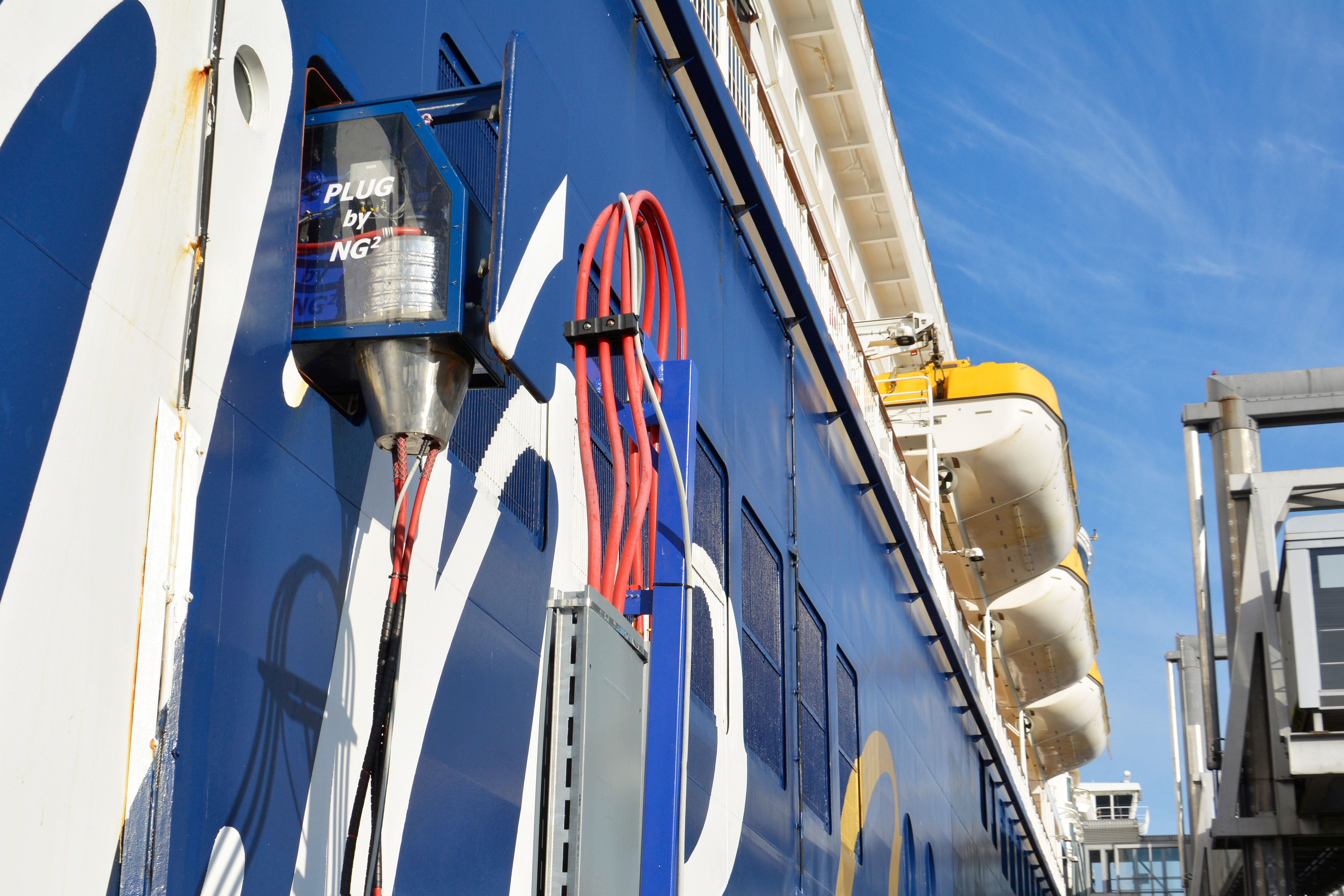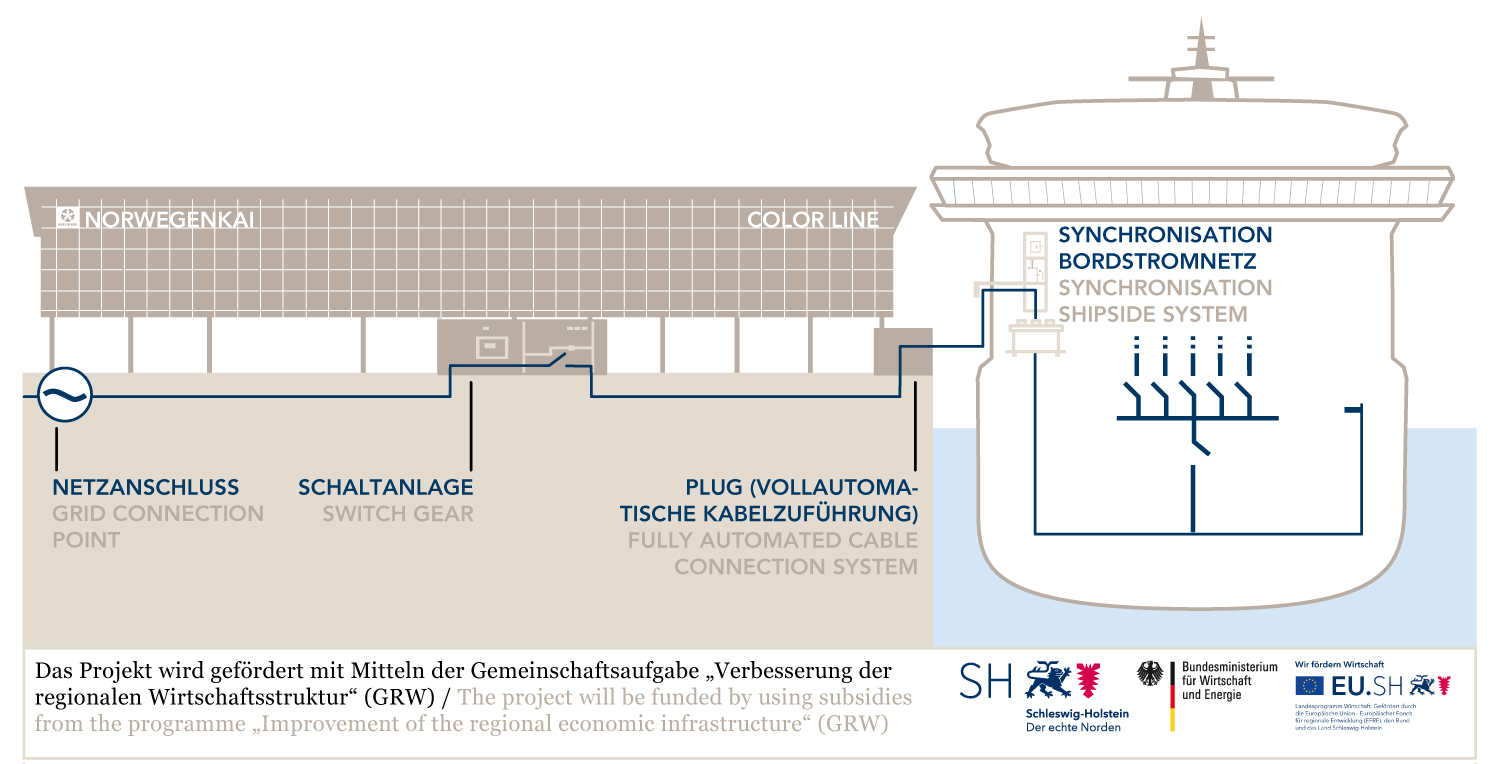shore power supply plant
at Norwegenkai.
It is a very rare that the Color Line ferries stay overnight at Norwegenkai. But when they do, they form a spectacular sight. Glowing lights being reflected in the Fjord, strings of paper lanterns connecting the ship’s bow and stern and finally the terminal that has one of the greatest views of the city.
BLUE PORT light.
The power used to create this atmospheric illumination by resource-saving LED lamps comes from purely ecological energy sources. Since spring 2019, the Color Line ferries will be able to connect to onshore-power so that each vessel’s diesel generators can be decommissioned during its docking time and thus the stay in Kiel becomes a pollution-free one.
The onshore-power plant for the Norwegenkai terminal is part of the BLUE PORT concept by the PORT OF KIEL. This concept also includes further onshore-power supply plants at Schwedenkai and Ostseekai that will be built by 2020. That way, we will be able to supply more than half of the ships berthing in the port of Kiel with onshore-power in future. This is a decision with quite considerable associated costs. The investment in the connection at Norwegenkai alone amounts to about 1.3 million Euros. However, here we are on the same page with the State, the City and the shipping companies: Kiel is supposed to set pan-European standards for a clean port.
The project was funded by using subsidies from the programme „Improvement of the regional economic infrastructure“ (GRW)

The Norwegenkai is the first terminal to be equipped with an onshore-power supply plant, Schwedenkai and Ostseekai will follow in 2020. The vessels “Color Fantasy” and “Color Magic” of the Norwegian shipping company Color Line connect Kiel and Oslo on a daily basis. They arrive at 10 a.m. and cast off again at 2 p.m. The annual electricity consumption during their time in port amounts to about 4 million kilowatt hours. The Norwegenkai onshore-power supply plant has a maximum power rating of 4.5 megawatts (MW) at 10 kilovolt (KV) and a network frequency of 50 hertz (Hz).
The way it works:
The core components of the plant are the land-to-ship power transfer station (PLUG), manufactured by the firm called NG3, alongside the air-insulated, metal-clad, medium voltage switch-board. The PLUG power transfer station is equipped with a programmable controller (PLC) which communicates with the medium voltage switchboard located in the onshorepower supply station. All the required switching procedures transferred to shore by the ship via the interface are carried out automatically. Prior to power transfer from shore to ship taking place, the system checks the functionality of all plug and cable connections. Once completed, the onshore-power connection is switched on. The ship synchronises itself with the onshore-power plant which replaces the on-board power supply.




